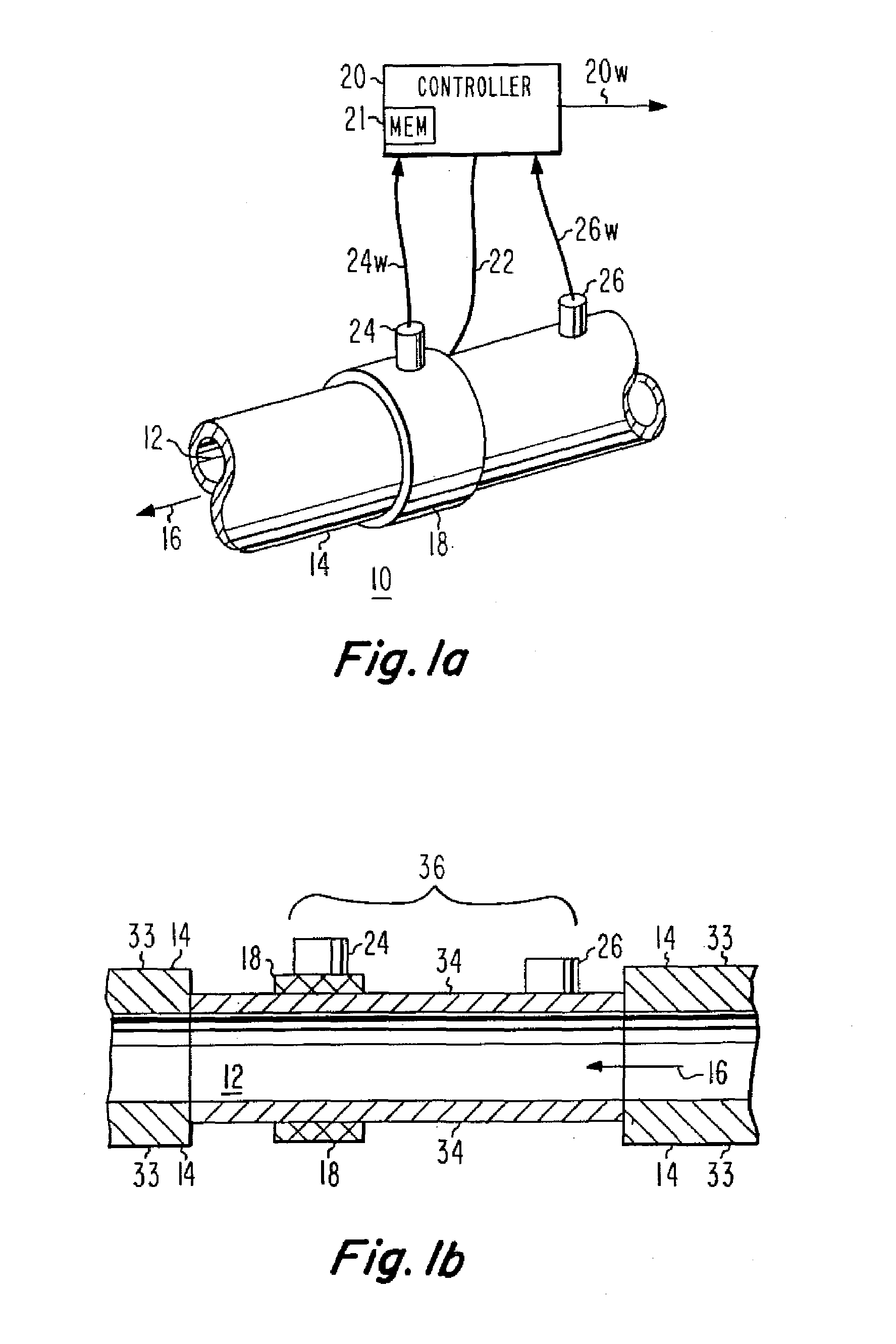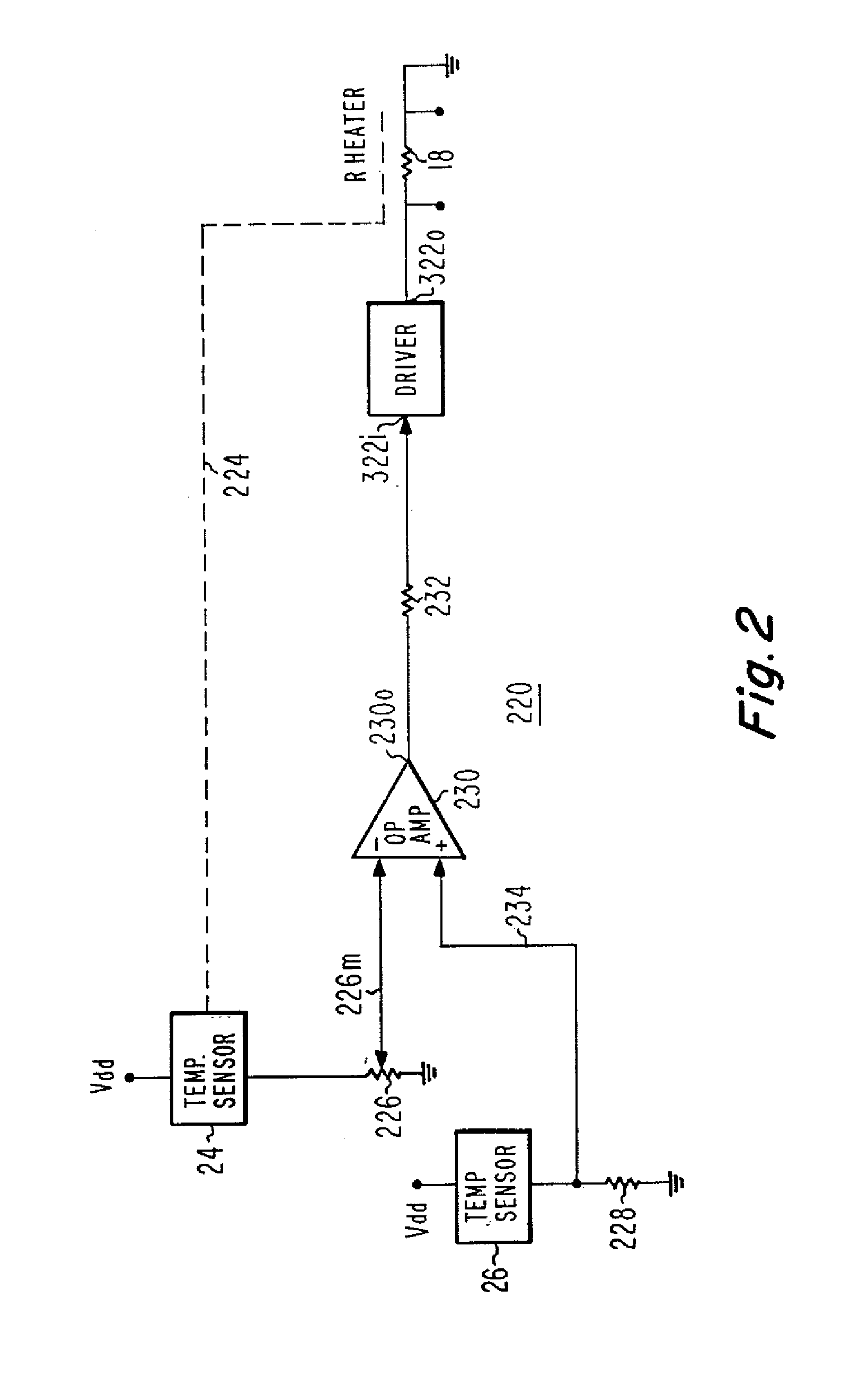Constant-temperature-difference flow sensor, and integrated flow, temperature, and pressure sensor
a flow sensor and constant temperature difference technology, applied in the direction of measurement devices, instruments, structural/machine measurement, etc., can solve the problems of affecting the flow, affecting the flow, and affecting the flow,
- Summary
- Abstract
- Description
- Claims
- Application Information
AI Technical Summary
Benefits of technology
Problems solved by technology
Method used
Image
Examples
Embodiment Construction
[0026]In FIG. 1a, a sensor 10 includes a fluid path 12 in the form of a round pipe 14 through which fluid flows in a direction designated by an arrow 16. Sensor 10 supports an annular peripheral electrical heating element or heater 18. A flow of electrical energy or power is applied to heater 18 from a controller 20 by way of a set 22 of wires. A temperature sensor 24 is coupled to heating element 18, for producing a signal representing the temperature of the heating element. The temperature-representative signal is applied to controller 20 by way of a set of wires 24w. Controller 20 includes a memory (Mem) designated 21. A further temperature sensor 26 is mounted to pipe 14 at a location upstream from heating element 18, for sensing the temperature of the fluid flowing in pipe 14, and for generating a signal representing the temperature of the fluid. The signal representing the temperature of the fluid is applied over a set of wires 26w to controller 20.
[0027]FIG. 1b is a represent...
PUM
 Login to View More
Login to View More Abstract
Description
Claims
Application Information
 Login to View More
Login to View More - R&D
- Intellectual Property
- Life Sciences
- Materials
- Tech Scout
- Unparalleled Data Quality
- Higher Quality Content
- 60% Fewer Hallucinations
Browse by: Latest US Patents, China's latest patents, Technical Efficacy Thesaurus, Application Domain, Technology Topic, Popular Technical Reports.
© 2025 PatSnap. All rights reserved.Legal|Privacy policy|Modern Slavery Act Transparency Statement|Sitemap|About US| Contact US: help@patsnap.com



